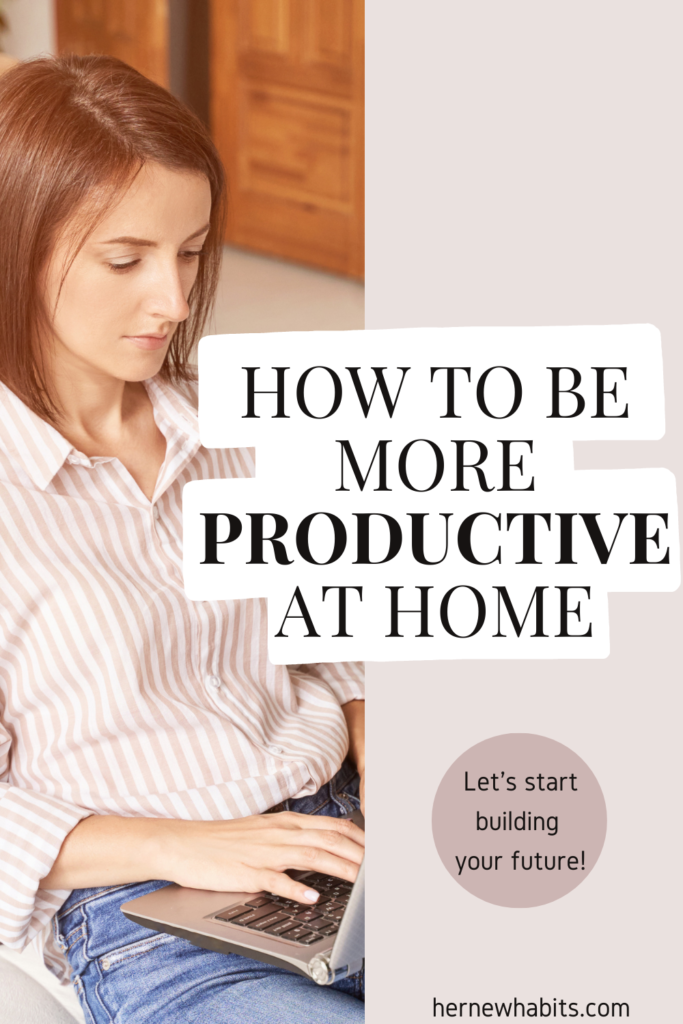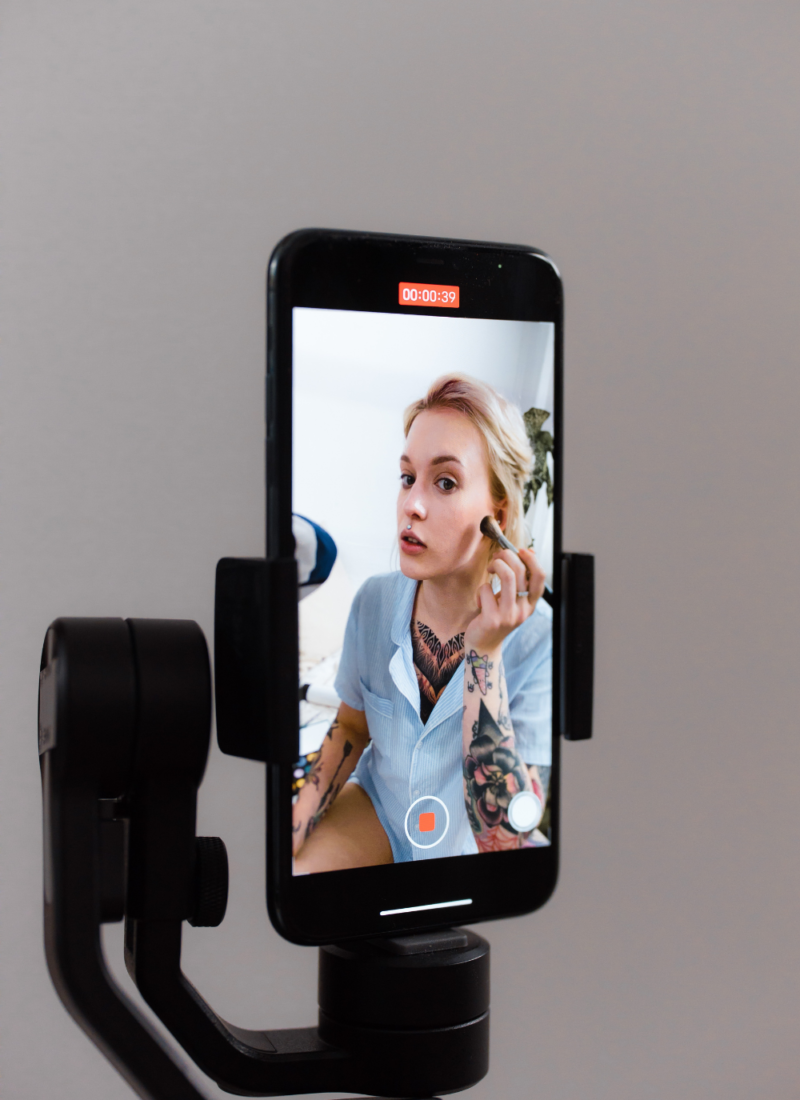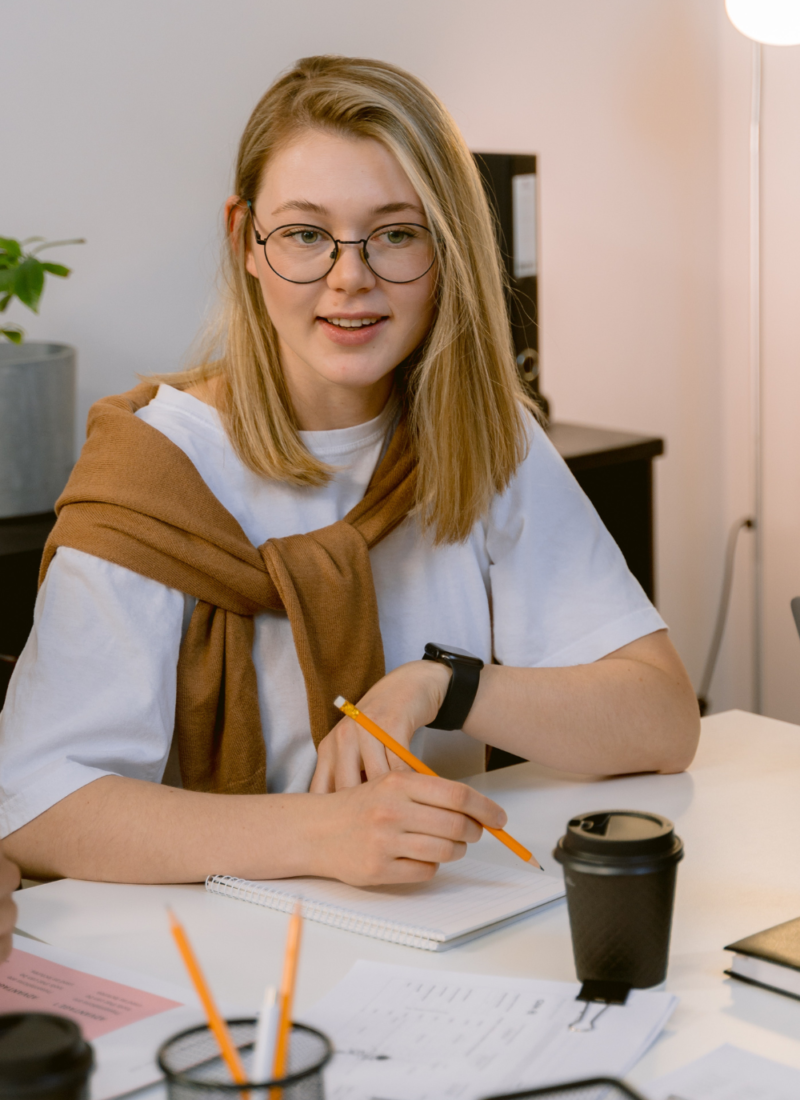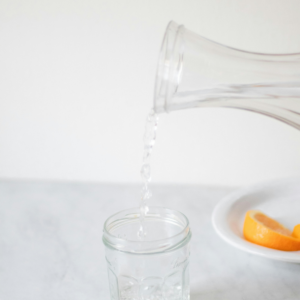What do you do when you start your day while working from home?
You scramble to the kitchen to get some coffee, jump in the shower, get ready, and open your laptop to start working.
The first thing you do is check your email.
Then, you check your phone and answer any messages you get.
Later in the day, you get distracted by social media, and before you know it, it’s 6 pm.
And you think… Where did the day go?
You “worked” all day, but you haven’t even started on the important tasks.
This makes you feel overwhelmed because there are so many things to do, but not enough time.
No worries!
This doesn’t have to be your case.
Do you want to learn how to be more productive working from home and make the most of your day? Would you like to make progress in your projects every day? Do you want to achieve your goals faster?
It’s possible!
Below, I’ll show you how you can be more productive and get the results you want working from home.
But first, what is productivity?
What is the definition of productivity?
Productivity doesn’t have only one definition.
It’s a multidimensional term because its meaning can change depending on the context.
If you lead a team, the mathematical definitions might be useful for you.
But if you are trying to apply it to yourself, verbal definitions will be your best choice.
The Japan Productivity Center (JPC) created one of those.
They describe it as a state of mind that allows us to improve ourselves and everything around us.
In other words, productivity is an attitude to do better tomorrow than today.
“Productivity is an attitude to do better tomorrow than today”
3 Strategies to be more productive working from home
Often, people think of time management as the only strategy, but there are other options.
Most of the strategies I am going to show you here have their base on habits.
The reason for that is that your routine is the result of habits you have created over time.
So, working on your habits will allow you to become more productive.
Once you create a habit (good or bad), it sticks with you until you decide to change it.
Now, let’s dive into each strategy.
1. Optimize your environment
One of the easiest ways to be more productive working from home is to make changes in your environment.
That way, you can set up your workspace to sustain the new habits you want to create.
A) Make your surroundings stable
Studies show that when you create a new routine, you should ensure that you have a supportive environment.
The components of this environment are:
- A stable physical setting.
- Existence of supplies.
- An action sequence where you can include the new behavior.
An environment with these characteristics will help you to be more productive working from home.
For example, if you work from home, you want to make sure that you:
- Have a space dedicated only for you to work (physical setting).
- You have the tools you need (supplies)
- You can use and have easy access to that space after you eat breakfast (action sequence).
Follow each of these components to ensure that the place where you work is ready for you.
During this process, you can ask yourself questions like:
- What is the best place in my house to work?
- Does the place have good illumination and is it away from distractions?
- Do I have the tools I need (laptop, desk)?
- Can I access my desk and other tools effortlessly?
B) Organize your workspace
If you already have a workspace only for you, and you have been working there for a while.
Chances are that you have piles of documents on one side and random things on the other side of your desk.
When this happens, you have fewer opportunities to be more productive working from home.
If that’s your case, you can use a system called 5’s.
This method can help you to do your work without wasting time by keeping it organized and clean.
Its name comes from five Japanese words, and this is how you can apply it to your life:
- Seiri (sort): Go through all the implements you have in your office and determine if you need them or not. If you don’t require anything to work, remove it.
- Seiton (set in order): Think what of those items that you kept in the last step, you use more often. Define where you can place each of them according to how often you use them.
- Seiso (Shine): Clean your workspace and keep it that way.
Tip: Set a reminder every month to deep clean your workspace. - Seiketsu (Standardize): Make a guide that you can check at any time to know how your office should be.
Tip: Take a picture of your workspace after you organize and clean it. Place it in an area where you can see it constantly, so you know how things should look.
- Shitsuke (Sustain): Organize your workspace at the end of the day, so you are ready for the next day.
Tip: Set a reminder on your phone and commit to cleaning your desk before getting off work every night.

2. Learn how to use your energy
It doesn’t matter how much time you have for a task if you don’t have the energy to do it.
That’s why, if you want to be more productive working from home, you have to understand how to manage your energy.
A) Know your biological rhythm
When are you more alert? Early in the morning or late at night?
Your answer to those questions will help you to understand what is the part of the day when you are more active.
If you have more energy, it means that you will have better performance.
Research has shown that you are more productive (working from home) when you understand your inner clock and schedule your day around it.
A study found that students performed better in their activities between 10 am and 1 pm.
This time can change slightly for every person.
It depends on their chronotype.
That’s a complex and flexible natural tendency of your body to be awake or asleep at different times of the day.
This is what you can do to know when your energy is at its highest level and your brain is more active:
1. Figure out your chronotype using this test.
2. List your most common tasks of the day (Responding to email, making calls, attending meetings, brainstorming, e.t.c.)
3. Schedule each of them according to your chronotype.
4. Try this for two weeks and notice if you feel more or less fatigued and if you have accomplished more or fewer tasks.
5. Make adjustments if necessary.
B) Don’t underestimate breaks
Taking a walk, talking with a family member, or sitting away from your desk are easy ways to take breaks.
We all can include those simple actions, but we often underestimate them.
For some people, it doesn’t make sense to take a rest while you have other 100 things to do.
And I understand, I’ve been there too!
But know that breaks are key to being more productive while working from home.
The rule is that our brains go from alert to fatigue in about 90 minutes.
That means that you should take a break every hour and a half to renew your energy for the next few hours.
Some people see breaks as the perfect time to drink coffee, smoke, make a personal call, or browse the internet.
Since many jobs produce stress and include very little physical activity, researchers have proposed something called booster breaks.
This approach aims to improve people’s health, productivity, and satisfaction at work. So it uses activities such as meditation, stretching, or breath training.
Each activity should take 10 to 15 minutes.
You should be able to do them in your workplace or at home, without needing to change clothes or use specific equipment.
This is how you can use booster breaks to be more productive while working from home:
1. Find something you enjoy doing. It should include some sort of body movement or relaxation.
2. Schedule that activity every day on your calendar for 10 minutes.
3. Try the first two weeks with only 1 activity and start including more every week. Aim to have 10 minutes or 15 minutes or breaks every 90 minutes of work.
3. Understand how to manage your time
In your daily life, it is easy for you to lose perspective of the time you use.
You can sit at your desk for hours without realizing how much time you were there.
Especially when working from home is hard to know how much of the time you have been productive.
A) Create a baseline of your day
Before you attempt to control your time, you need to know how you are spending your time.
On a piece of paper, write the tasks you do every day and what time it takes you to finish each task.
This will help you to understand how you are using your time while working from home and what actions you can take to be more productive.
When you are aware of how much time you use on tasks that are not important, it is easier to make decisions and drop them from your routine.
B) Identify your time asset and time debts
There are different tasks you do while working (from home) that are helping you to be more productive, and there are others that are not helping you that much.
Time assets are activities that you can do once, and they keep working later without you doing the work.
For example, speed reading.
In the beginning, you spend time learning it, but once you do it you save a lot of time.
Time debts include activities that will make you spend extra time making them in the future.
For example, answering clients’ questions after you launch a product.
Patrick McKenzie introduced these two concepts.
He encourages people to build more time assets and be more aware of time debts.
You can see that habits can be time assets.
Once you create them, they work for as long as you want.
Some examples of habits that will save you time in the future:
1. Pick up your clothes for the whole week in one day
2. Set up rules to filter your email
3. Plan the agenda and prepare for every meeting you have.
4. Schedule specific times to check your email.
5. Focus on one task at once.
6. Outline your workday before it starts.
7. Plan deadlines for each task you have.
C) Cut distractions
Now, more than ever, it has become more important to learn how to handle distractions.
You spend a good bit of your day on phone calls, emails, social media messages, and notifications.
That’s the consequence of living in this technology era.
Dr. Gloria Mark, Professor in the Department of Informatics at the University of California, says that it takes us about 23 minutes to get back to a task after an interruption.
She also suggests that the cost of switching between tasks is high levels of stress in your body.
Fortunately, there are a few things you can do to help your productivity and take care of your health at the same time.
This is what you can do:
1. Use the baseline you created before, set a new goal for how much time you want to spend on each task.
For example, if you are using social media for one hour every day now, you will limit it to 20 minutes.
2. For each of these new goals, you will have to set a habit.
You know you like scrolling on social media in the afternoon. Now, every time you finish lunch, you are going to put your phone in silence.
3. Repeat the new activity every day and see how you feel.
If putting your phone in silence doesn’t stop you from using it, you will have to look for other ways.
For example, putting your phone in another room that you don’t use often.
Bottom line: Some distractions are going to be out of your control.
In this case, it is important to be aware that they can happen and make sure you are prepared for them.
D) Learn to focus on one task
Most people believe that multitasking is the solution to being more productive.
But the reality is that you perform better when you focus on one task at a time.
Public relations expert Ivy Lee created a technique that will help you with that.
This is how it works:
- Take 15 minutes at the end of your workday to make a list of tasks you have to finish.
- The next day, take that list and start doing the first task.
- Don’t go to the next one until you finish the first one.
- After you finish working, do the same exercise and prepare for the next day.
Follow these steps and at the end of the week, you will notice that you have accomplished more tasks than ever before.
Getting organized and planning every day beforehand is key to becoming more productive.
Bonus: the 4th way to be more productive working from home
I understand that all the information I just shared with you, might be overwhelming.
That’s why I decided to share with you a simple, easy way to approach productivity.
And that is to be aware of your micro-habits and use them to your advantage.
Learn how to use micro-habits to be more productive working from home
Micro-habits are actions that you have created over time and that are so small that most of the time you don’t notice them.
A lot of them are beneficial to you, but some of them are causing you more bad than good.
So, take a close look at your day and start identifying those small actions you repeat every day that might be risking your productivity.
Also, identify those micro-habits that are helping you to be more productive.
If you are not sure what I’m talking about, I’ll share with you two lists with different micro-habits that you can start incorporating into your routine.
The first list (A) has several micro-habits you can develop to help you get things done during work hours.
You don’t suppose to do them all at once, but at least try doing one every day.
The second list (B) has examples of mini-habits that you can do during your free time but that will still impact your productivity in a positive way.
A) Mini-habits to do during work hours to be more productive:
- Before work:
- Put your phone in focus mode when you sit at your desk.
- Schedule breaks and take them!
- Spend 5 minutes writing a to-do list.
- Stretch your neck and shoulders.
- During work:
- Carry a bottle of water everywhere to stay hydrated.
- Read your email after you finish your most important task of the day.
- Close your email browser tab when you are done to avoid the temptation of opening it every 5 minutes.
- Plan an agenda for every presentation you have.
- Breath for 5 minutes if you are stressed.
- After work:
- Organize your desk at the end of the day.
- Log out of social media every night.
- Choose your outfit for the next day.
B) Mini-habits to do during your free time that will help you be more productive:
- Play one mental game per day.
- Take daily walks of 10 to 15 minutes.
- Read for 10 minutes every day (books, articles, newspapers, etc.).
- Look out your window for 5 minutes and think only about the things you can see from your room.
- Smile for 1 minute straight.
- Stretch your wrists, hands, and feet.
“When you focus on creating small, better changes in your life, you are inevitably creating a better lifestyle for yourself.”
NURY BROWN
Conclusion
Productivity is a broad concept that can be understood as a mindset that will help you to improve every day.
So, the goal is to do better today than yesterday.
- If you create habits to be more productive, you will make all this process easier.
- Saving your energy and time are two important concepts that few people talk about.
- Plan ahead, automate simple tasks, focus on one task, and take breaks.
These few last questions will help you start with the right foot:
- What can you do to achieve faster the results you want at work?
- What can you change in your environment or yourself to feel you are improving?
- What things you can do to finish that project you’ve been putting aside, or to complete all the things on your “to-do list”?.
Which strategy are you going to try first?
Tell me in the comments!





Skye Sauchelli says
Love love love your tips on understanding how to use our energy. Some of us are more productive in the morning, while others are at night. It’s good to know that you don’t have to abide by what the world says is productive work time. Great post 🙂
Nury - Her New Habits says
Thank you! So glad to hear that you like these tips on how to be more productive from home. Energy is everything and we must learn how to use it, I hope I give you a few ideas to do so. 🙂
Hope+Long says
Fantastic article! Thank you for this!
Nury - Her New Habits says
You’re welcome! So glad you like it 🙂
Ahuva says
Great tips!
Nury - Her New Habits says
Thanks!
Sarah says
Having the right workspace and keeping it organized is a major step in being more productive. I know when my workspace is chaotic, then my ability to work is greatly reduced. I also agree that breaks are super important. Without them, you are going to burn yourself out or allow yourself to get distracted by social media as a way to avoid work. Those micro habits sure will help keep everything organized and flowing day to day.
Nury - Her New Habits says
Exactly. You don’t have to change your whole routine to be more productive, but making a few changes in you life can help you to be more productive when working from home. A clean workspace and taking breaks often are a staple for me.
Amanda says
Love these ideas! Really useful post. Thank you.
Nury - Her New Habits says
So glad to hear that you found these tips on how to be more productive when working from home useful.